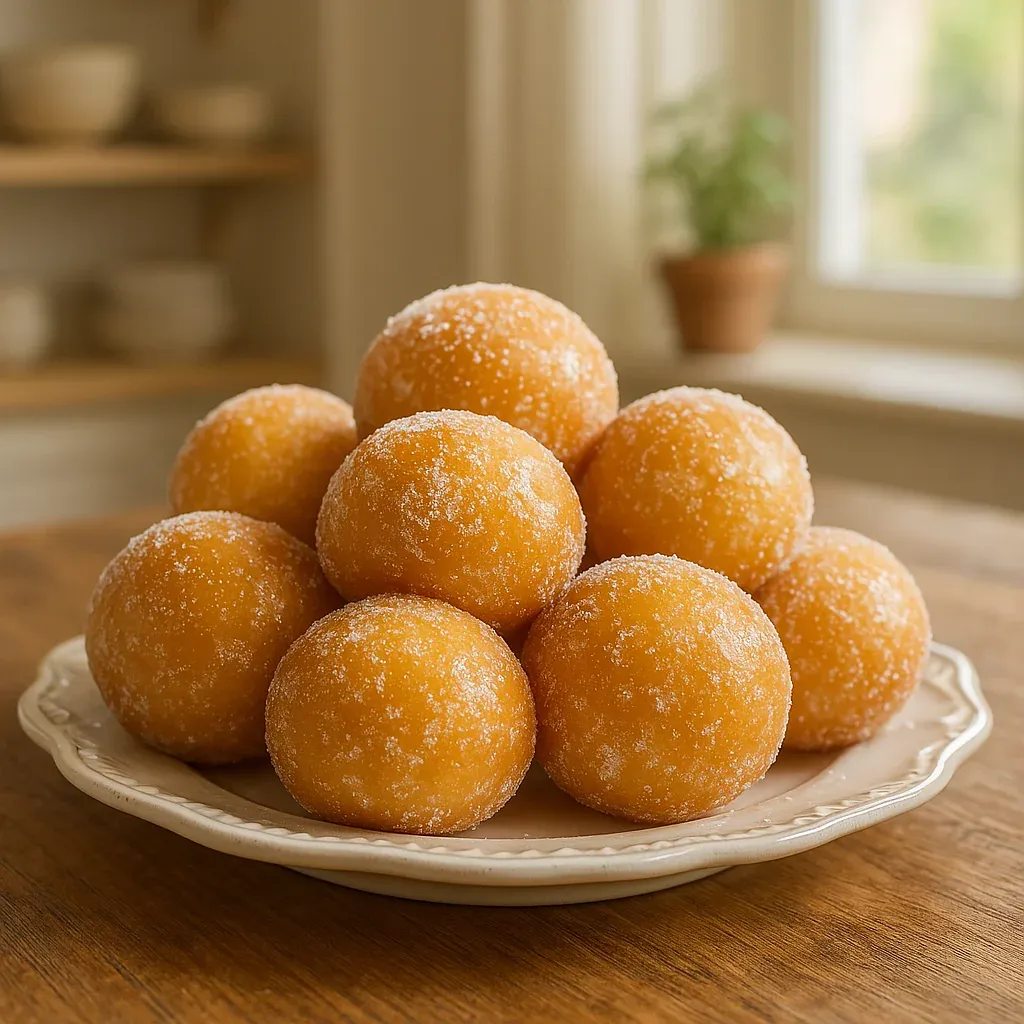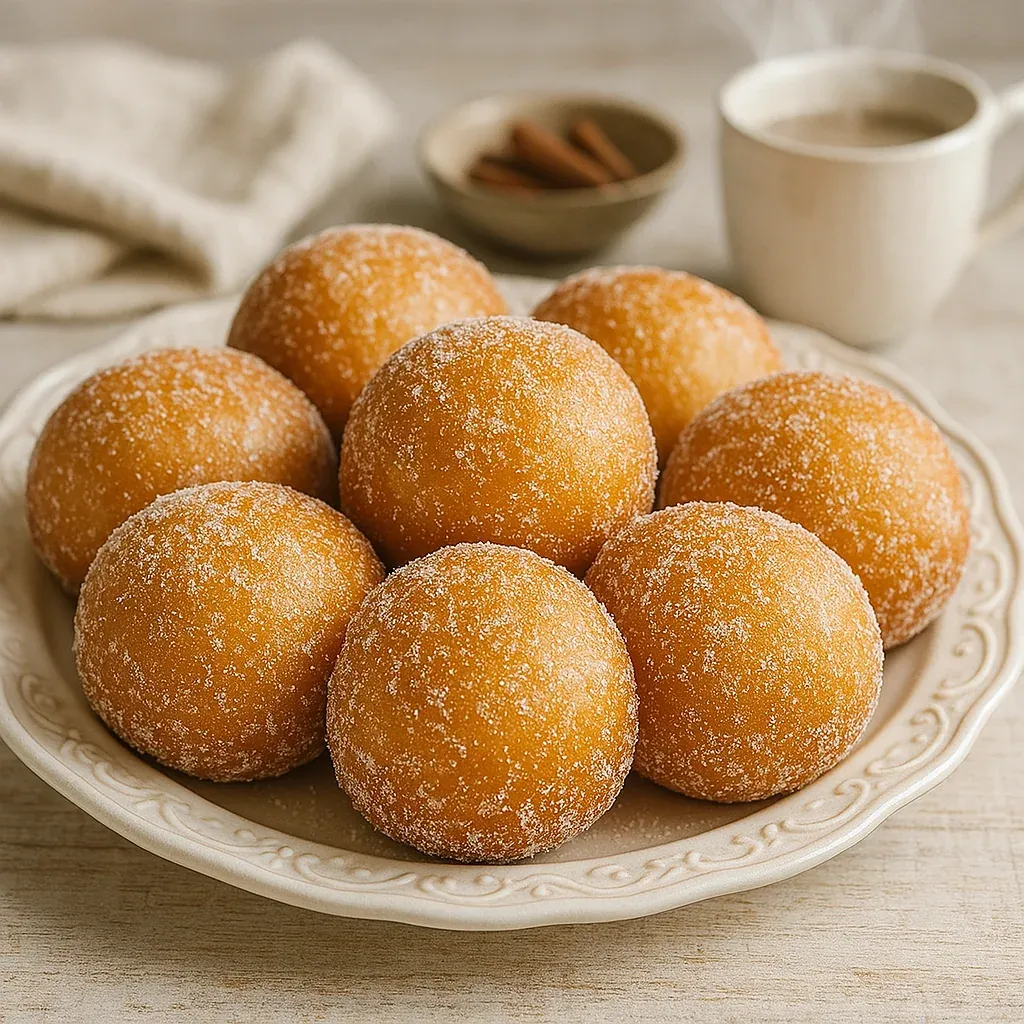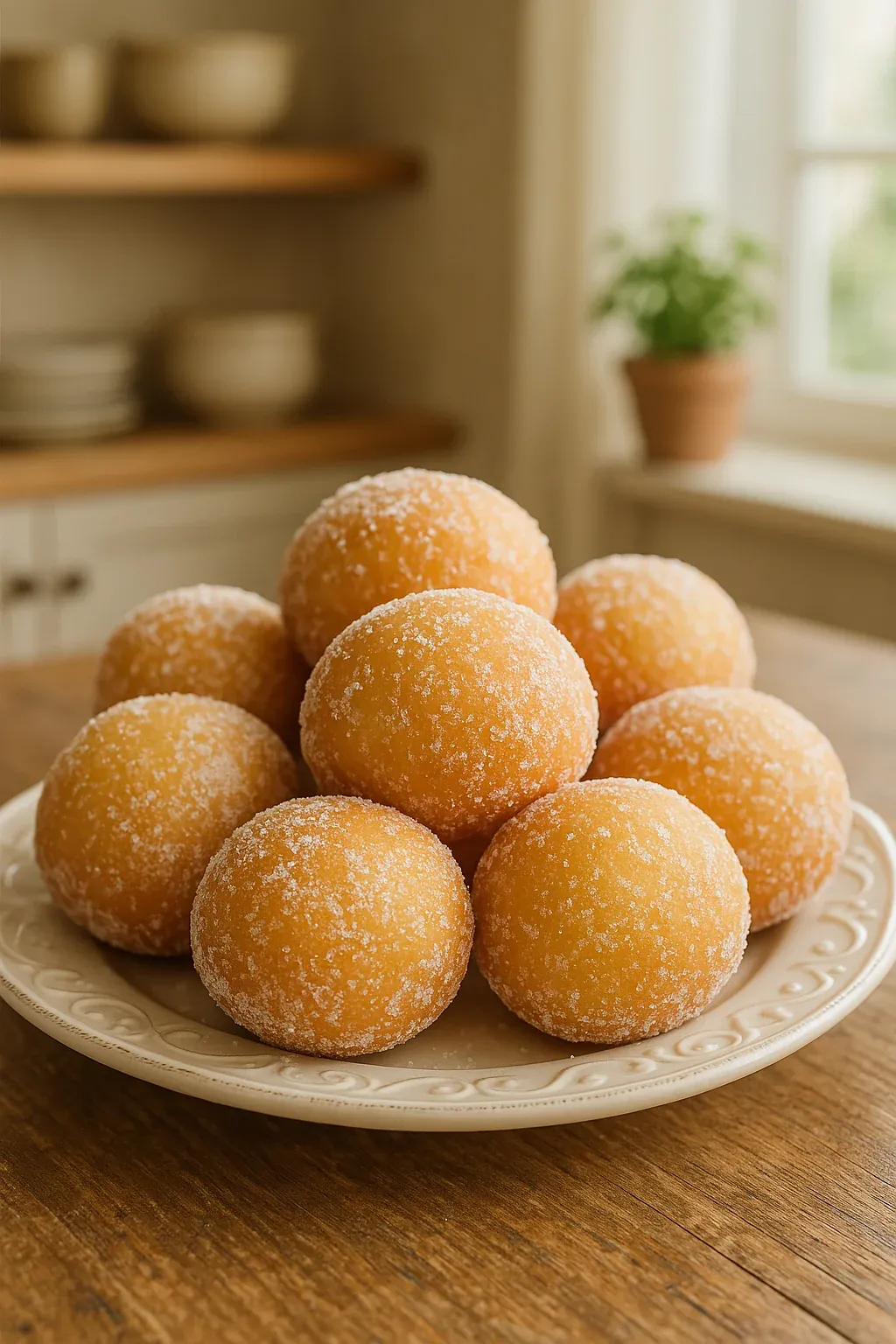 Pin it
Pin it
These fluffy Portuguese doughnuts bring the genuine flavor of malasadas straight to your home. These golden-brown goodies hit that sweet spot between crunchy outside and pillowy inside that makes them so tempting. After trying these during a Hawaii vacation some time back, I wanted to nail making them in my own kitchen, and they've now turned into our family's weekend breakfast staple.
My first malasada came from a tiny Honolulu bakery and I was hooked right away. After trying to copy them many times, this version finally got that perfect mix of sweetness and texture that took me back to that small island shop.
Ingredients
- All purpose flour: Forms the base that keeps these doughnuts soft yet structured
- Granulated sugar: Gives just enough sweetness that doesn't take over the soft dough
- Active dry yeast: Makes those important bubbles for that cloud-like texture
- Warm milk: Wakes up the yeast and makes the dough richer
- Eggs: Add richness and help create that lovely golden color
- Unsalted butter: Brings moisture and gentle richness to your dough
- Vanilla extract: Boosts overall taste with warm aromatic hints
- Salt: Cuts the sweetness and makes all other flavors pop
- Vegetable oil: For cooking gives that perfect crispy outside without adding any taste
- Extra sugar: For rolling creates that must-have sweet crunch in every mouthful
Step-by-Step Instructions
- Yeast Activation:
- Mix warm milk at about 110°F with a small spoonful of sugar and your yeast in a bowl. Let it sit quietly for 5-10 minutes till it gets bubbly and smells yeasty. This shows your yeast is good to go for your dough.
- Dough Creation:
- In a big bowl, mix your flour, sugar, and salt. Dig a hole in the middle and pour in your eggs, melted butter, vanilla, and bubbly yeast mix. Stir it all up until you get a somewhat sticky dough. It should come away from the bowl sides but feel a bit tacky when touched.
- First Rise:
- Put a clean kitchen cloth over your bowl and find a warm spot with no drafts. Let the dough grow until it's twice as big, usually taking 1-2 hours depending on how warm your kitchen is. You can check if it's done by poking it gently. If the dent stays, you're good to go.
- Shaping The Doughnuts:
- Dump your puffy dough onto a slightly floured counter and press it down gently to push out extra air. Cut the dough into golf ball-sized pieces. Roll each chunk into a smooth ball and lay them on a floured surface. Cover with a towel and let them rest 15 minutes so the dough can relax.
- Oil Heating:
- Add about 2 inches of vegetable or canola oil to a heavy pot or deep fryer. Heat it to exactly 350°F, using a thermometer to check. Keeping this temperature steady is key for good cooking without oily results.
- Frying Process:
- Gently drop 2-3 dough balls into the hot oil, making sure not to crowd them. Cook about 2 minutes per side until they turn a rich golden brown. Watch your oil temp the whole time and tweak your heat as needed to stay at 350°F.
- Sugar Coating:
- Lift out the fried malasadas with a slotted spoon and let them sit briefly on paper towels to drain off extra oil. While still warm but cool enough to handle, roll them in sugar until they're fully covered. The warmth helps the sugar stick just right.
- Serving:
- Put your freshly sugared malasadas on a plate and eat them right away while warm. This is when they taste best with that slight crunch giving way to that soft, pillowy middle.
 Pin it
Pin it
I learned to make these from my grandma when I was just a kid. She always said you need to use full-fat milk and real vanilla, and that taking shortcuts would show up in how they taste. That's something I've kept in mind through years of cooking, and it works for way more than just these tasty doughnuts.
History and Cultural Significance
Malasadas come from Portugal's Madeira and Azores islands. Portuguese workers brought this treat to Hawaii in the late 1800s when they came to work in sugar fields. They're super popular on Fat Tuesday, called Malasada Day in Hawaii, when shops sell thousands to celebrate before Lent starts. Making these treats has stuck around through many family generations, so they're much more than just a sweet snack but a link to cultural roots.
Filling Variations
Want to make your malasadas even better? Try adding stuff inside them. After cooking and cooling a bit, use a piping bag with a long tip to push fillings into the middle. Real Portuguese custard (nata) is the classic choice, but chocolate cream, fruit jams, or coconut cream work great too. For best results, fill them while they're still warm but not hot, which helps the filling spread nicely without turning too runny.
Temperature Control Tips
Getting perfect malasadas comes down to watching temps throughout. Your milk should be around 110°F for the yeast anything hotter will wreck it, while cooler milk won't wake it up properly. When cooking, keep oil at 350°F using a thermometer. If your oil gets too hot, the outside burns while the inside stays raw. If it's too cool, the doughnuts soak up too much oil and get greasy. Paying attention to these temp details turns your malasadas from just okay to amazing.
 Pin it
Pin it
Frequently Asked Questions
- → What’s special about malasadas?
Malasadas have a fluffy inside, golden crunchy outside, and a rich history connecting Portugal and Hawaiian culture.
- → Can I stuff malasadas with different fillings?
Of course! You can fill them with anything from chocolate to custard or even fruit jams to match your taste.
- → Which oil should I fry malasadas in?
Go for canola or vegetable oil. Their neutral flavor and ability to handle high heat make them great options.
- → How should I store malasadas overnight?
Place malasadas in a sealed container on the countertop, keeping them fresh for two days. Don’t refrigerate them—it draws out moisture.
- → What’s the best way to reheat malasadas?
Pop them in the microwave for about 10–15 seconds, or use a 300°F (150°C) oven to warm them up and keep them soft.
- → What fun toppings can I try?
Experiment with citrus zest, cinnamon sugar, or some shredded coconut to make your malasadas taste extra special!
